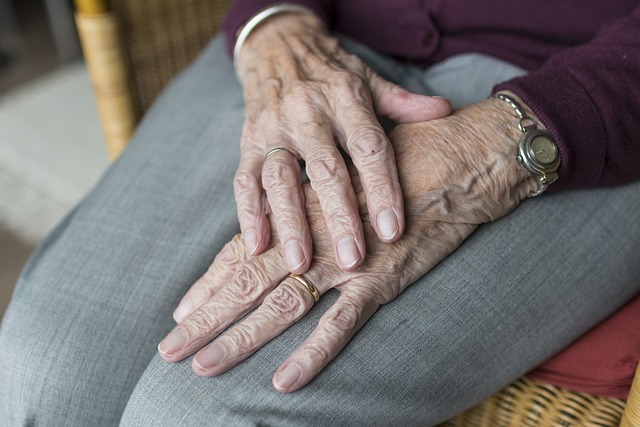Have you ever wondered how to assess a senior’s safety needs? It’s an important question to consider, especially if you have an elderly loved one who lives alone or has special care requirements. In this article, we’ll explore the various aspects of assessing a senior’s safety needs and provide you with practical tips and advice. So, if you’re looking to ensure the well-being of your senior family member or friend, keep reading to learn more.
Assessing a senior’s safety needs involves carefully evaluating their living environment, physical health, and cognitive abilities. Firstly, it’s crucial to assess their home for potential hazards such as loose carpets, slippery floors, or inadequate lighting. Additionally, it’s important to evaluate their physical health to determine if they require mobility aids or modifications to make their home more accessible and safe. Lastly, assessing their cognitive abilities is essential, as conditions like dementia or Alzheimer’s can impact their awareness and judgment, increasing the risk of accidents. By considering these factors, you’ll gain a better understanding of their safety needs.
In this article, we’ll delve deeper into each of these aspects of assessing a senior’s safety needs, providing you with practical guidance and suggestions to ensure their well-being. From simple home modifications to promote safety to helpful resources and support services, we’ll cover everything you need to know to make informed decisions for your elderly loved one.

Recognizing the Risks
The first step in assessing a senior’s safety needs is to recognize the potential risks they may face. One of the most common risks is mobility and falls. As we age, our balance and coordination may deteriorate, making us more prone to accidents. It is essential to assess a senior’s mobility and identify any factors that may increase their fall risk, such as uneven flooring, poor lighting, or obstructed pathways. By addressing these hazards, we can significantly reduce the chances of falls and consequent injuries.
Another vital aspect of recognizing risks is conducting a comprehensive home safety evaluation. This evaluation should include a thorough assessment of the living environment, including potential hazards like loose carpets, slippery surfaces, or inadequate bathroom fixtures. By addressing these issues, we can create a safe living space that minimizes the risk of accidents and promotes a sense of security for seniors.
Providing a Safe Environment
Creating a safe environment for seniors goes beyond addressing physical hazards. It is equally important to assess their cognitive safety needs. Memory impairment is a prevalent concern among older adults, and it can significantly impact their safety. By identifying any signs of memory impairment, such as forgetfulness or confusion, we can take proactive steps to ensure their well-being. This may include implementing strategies to help them remember important information, like medication schedules or emergency contact details.
Assessing a senior’s decision-making capacity is another crucial aspect of cognitive safety assessment.

Furthermore, evaluating risk awareness is essential in identifying any potential gaps in a senior’s understanding of their surroundings. Some older adults may have difficulty recognizing and responding to potential dangers, which can put their safety at risk. By assessing their risk awareness, we can develop strategies to enhance their understanding of potential hazards and empower them to take appropriate precautions.
Emotional Well-being Assessment
Assessing a senior’s safety needs should also encompass their emotional well-being. Social isolation is a significant concern among older adults, as it can lead to feelings of loneliness and depression. By identifying signs of social isolation, such as limited social interactions or a lack of social support, we can help seniors establish and maintain meaningful connections. This may include encouraging participation in community activities, connecting them with local support groups, or facilitating regular interactions with family and friends.
In addition to social isolation, evaluating mental health is crucial in assessing a senior’s safety needs. Older adults are susceptible to mental health conditions such as depression and anxiety, which can significantly impact their overall well-being. By assessing their mental health status, we can identify potential signs of depression or anxiety and provide appropriate support. This may involve connecting seniors with mental health professionals or offering access to counseling services.
Support Systems and Resources
Identifying the support systems available to seniors is an essential part of assessing their safety needs. Many older adults rely on family members or caregivers for assistance with daily activities, healthcare management, and overall well-being. By identifying the availability of caregiver support, we can ensure that seniors receive the necessary assistance and create a robust support system around them.
Accessing community services is another vital aspect of supporting seniors and meeting their safety needs. Many communities offer various services specifically designed for older adults, such as transportation assistance, meal delivery programs, or home health services. By assessing the availability and accessibility of such services, we can help seniors access the resources they need to maintain their safety and well-being.
Adaptive equipment and technology can also play a significant role in enhancing senior safety. Assessing the need for adaptive equipment, such as mobility aids or safety devices, can provide older adults with the tools they need to navigate their environments safely. Similarly, evaluating the potential benefits of technology, such as emergency alert systems or medication management apps, can empower seniors to take control of their safety and enhance their independence.
Medical Needs Evaluation
Monitoring and managing chronic conditions are essential components of assessing a senior’s safety needs. Many older adults have underlying medical conditions that require regular attention and care. By evaluating their medical needs, we can ensure that they receive appropriate treatment and support. This may involve regular check-ups with healthcare professionals, medication management, or specialized care for specific conditions.
In addition to chronic conditions, assessing emergency preparedness is crucial in meeting a senior’s safety needs. Older adults may face unique challenges during emergencies, such as natural disasters or medical emergencies. By evaluating their access to emergency resources, creating emergency plans, and ensuring a clear line of communication, we can enhance their safety during unforeseen situations.
Evaluating access to healthcare is another vital aspect of assessing a senior’s safety needs. Easy access to healthcare services, including doctors, specialists, and emergency care, is crucial for maintaining good health and addressing any medical issues promptly. By assessing the availability of healthcare providers in a senior’s area and their transportation options, we can help ensure timely access to healthcare services.
Holistic Approach to Safety
Assessing a senior’s safety needs should go beyond physical and medical aspects. A holistic approach to safety includes promoting mental and emotional well-being, implementing healthy lifestyle practices, and encouraging engagement and social connections.
Promoting mental and emotional well-being involves creating a supportive and nurturing environment for seniors. This may include encouraging activities that promote relaxation and stress reduction, such as meditation or hobbies. Providing opportunities for social interaction, such as organized outings or group activities, can also play a significant role in enhancing mental and emotional well-being.
Implementing healthy lifestyle practices, such as regular exercise and a balanced diet, can contribute to a senior’s overall well-being and safety. Regular physical activity helps maintain mobility, strength, and coordination, reducing the risk of falls and accidents. A balanced diet provides essential nutrients to support overall health and may help manage chronic conditions. By assessing a senior’s lifestyle practices and providing guidance on healthy habits, we can contribute to their safety and well-being.
Encouraging engagement and social connections is vital for seniors’ mental and emotional health. Engaging in social activities and maintaining relationships with friends, family, and community members can enhance cognitive function, reduce feelings of loneliness, and promote a sense of belonging. By assessing a senior’s level of engagement and encouraging participation in social activities, we can contribute to their overall safety and quality of life.
Creating a Safety Plan
Once all aspects of a senior’s safety needs have been assessed, it is essential to create a comprehensive safety plan. This plan should identify potential hazards and outline steps to mitigate these risks. Identifying potential hazards may include addressing environmental issues, implementing safety precautions, and considering the individual’s specific needs and vulnerabilities.
Developing emergency procedures is a crucial part of the safety plan. This may involve creating a clear plan for emergencies, outlining evacuation routes, and designating emergency contacts. Regular communication with emergency responders and healthcare providers should be established to ensure a swift response during emergencies.
Establishing regular communication is key to maintaining a senior’s safety. Regular check-ins with family members, caregivers, or neighbors can provide peace of mind and ensure that any changes in health or safety needs are promptly addressed. Additionally, maintaining open lines of communication with healthcare providers and community resources can contribute to a senior’s overall well-being and safety.
Regular Assessment and Monitoring
Assessing a senior’s safety needs should be an ongoing process. As individuals age, their needs and vulnerabilities may change, requiring regular reassessment. Re-evaluating safety needs involves reviewing the effectiveness of existing safety measures and identifying any new risks that may have emerged.
Updating safety measures is crucial in addressing any changes in a senior’s safety needs. This may involve modifying the home environment, implementing new technology, or adjusting support services. By regularly updating safety measures, we ensure that seniors are continuously protected and supported.
Tracking changes in health status is also essential in assessing a senior’s safety needs. Monitoring any changes in chronic conditions or cognitive abilities can help identify potential risks or challenges that may require further attention. By staying informed about their evolving health status, we can take proactive steps to maintain their safety and well-being.
Conclusion
In conclusion, assessing a senior’s safety needs is an integral part of ensuring their overall well-being and quality of life. By recognizing the risks they may face, addressing physical, cognitive, and emotional safety needs, and creating a comprehensive safety plan, we can enhance their safety and peace of mind. Regular assessment and monitoring allow us to continuously adapt and provide the support they need as their circumstances change.



